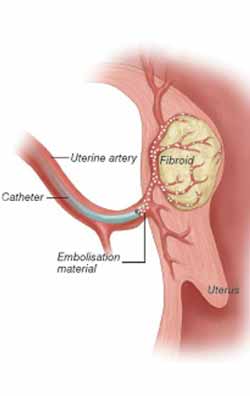
Menorrhagia also known as hematomunia is the term used to describe heavy blood loss for prolonged period during menstruation although the interval remains normal.A normal menstrual cycle lasts for about 21 to 35 days, with blood loss for about 5 days and of about 25 to 80 ml. Now, whenever the amount of blood loss is greater than 80 ml and or it lasts for more than 7 days the condition is considered to be menorrhagia. Sometime menorrhagia is used only to describe excess blood loss and for prolonged period of blood loss the term hypermenorrhoea is used, however most of the times both the terms are used interchangeably.
Excessive blood loss is the most bothersome symptom of menorrhagia; sometimes severe lower abdominal cramping pain may also accompany interfering with normal daily life. Treatment of menorrhagia usually depends upon the underlying cause, if any, and management of the symptoms. Commonly used drugs to relieve symptoms include NSAIDs, tranexamic acid, oral contraceptives, orally administered progesterone etc.
Symptoms
Common presenting symptoms of menorrhagia include
1. Increased number of tampons or sanitary pad requirement; usually a single pad can soak about 5 ml of blood. Sometimes bleeding can be so heavy that one need to change a pad almost at every hour. Other common characteristic feature of heavy blood loss is the need to change pads in the middle of the night
2. Prolonged duration of bleeding often for more than 7 days
3. Passage of blood clots for at least one to two days
4. Heavy blood loss may lead to interference with normal daily routine, school activities, poor performance at office etc
5. Heavy blood loss often leads to anemia, common presenting symptoms of anemia include increased tiredness, respiratory difficulty and in severe cases heart failure may occur
Causes
In most of the cases of menorrhagia the exact underlying cause cannot be identified; however there are some health conditions which may lead to heavy blood loss.
These health conditions include
1. Imbalance of hormone: the balance between estrogen and progesterone is responsible for maintenance of the inner lining of the uterus (endometrium) which shed every time during menstrual blood loss. Any sort of imbalance in the hormones may lead to excessive growth of the endometrium and thus heavy bleeding during menstrual bleeding
2. Anovulation: lack of ovum production leads to inadequate production of progesterone leading to hormonal imbalance and heavy blood loss
3. Fibroids: these are non cancerous growths arising from the wall of the uterus in women of childbearing age group. Excessive bleeding during menstruation may occur sometimes in women with fibroids
4. Uterine polyps: presence of these benign growths in the uterus may lead to increased amount of blood loss in women of reproductive age group
5. Adenomyosis: in this condition the inner lining of the uterus , the endometrium (consisting of stromal and glandular tissue) may invade the adjacent muscular layer of the uterus (myometrium)
6. Implantation of intrauterine device (IUD): menorrhagia is a known complication of IUD implantation.
7. Miscarriage: in many cases single episode of heavy blood loss may signify miscarriage. Ectopic pregnancy, where the fertilized ovum gets implanted outside the uterine cavity (ectopic sites) may lead to menorrhagia
8. Under rare circumstances uterine, ovarian or cervical cancer may occur
9. Suffering from coagulation disorder like von Willebrand’s disease
10. Intake of certain drugs like NSAIDs
11. Certain other health problems like pelvic inflammatory disease, thyroid diseases, endometriosis etc
The most important risk factor for menorrhagia is the hormonal imbalance in women of reproductive age group, especially in those cycles when there no ovum production (anovulation). Anovulation is usually common in women of two different age groups; young girls who have just started to menstruate and women who are about to have menopause.
Treatment
Treatment options depend upon certain factors like age, any plans to conceive, severity of symptoms, generalized health condition etc.
The commonly available treatment options are
Drugs like NSAIDs, tranexamic acid, hormonal contraceptives, intrauterine device which release hormone (progesterone) etc.
Surgical interventions (depending upon the underlying cause) like dilation and curettage, myomectomy, uterine artery embolisation, endometrial ablation even removal of the uterus (hysterectomy)





